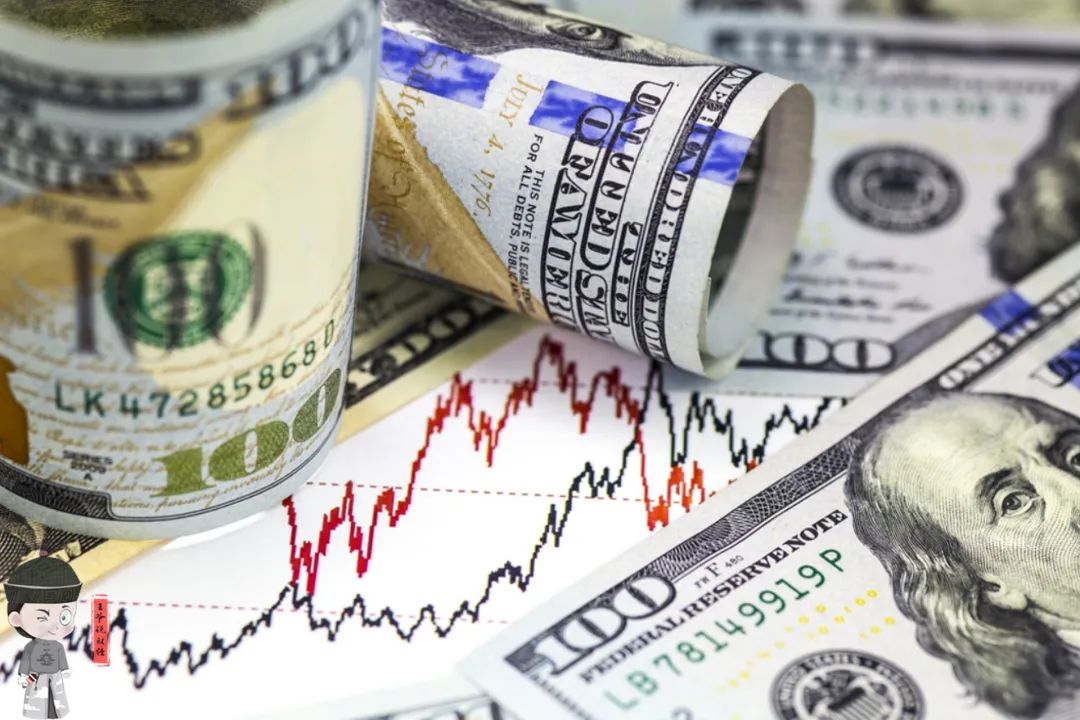
Currency surge! What's going on?
“During the "May Day" holiday, the offshore Chinese yuan (CNH) exchange rate against the US dollar saw a notable rise, recapturing the key 7.2 level.”
During the "May Day" holiday, the offshore Chinese yuan (CNH) exchange rate against the US dollar saw a notable rise, recapturing the key 7.2 level Data indicates that during the "May Day" holiday, the offshore Chinese yuan (CNH) appreciated against the US dollar from 7.2312 to 7.1644, marking its highest point since February, accumulating a gain of over 700 basis points。 As of 1 p.m. on May 6th, influenced by the US Dollar Index rebounding from its lows, the offshore CNH was fluctuating around 7.2143 against the US dollar. The latest U.S. April jobs report, which showed a slowdown in employment growth, significantly below market expectations, eased concerns about inflation and bolstered confidence in expectations of Federal Reserve interest rate cuts. Traders are now anticipating the Fed to start cutting rates as early as September, with potentially two rate cuts forecasted for 2024. These developments are expected to further underpin the appreciation of the Chinese Yuan's exchange rate According to multiple industry insiders, during the "May Day" holiday period, the offshore Chinese yuan (CNH) experienced a level of enthusiasm from investors comparable to that seen in the Hong Kong stock market. From May 1st to May 3rd, the offshore Chinese yuan (CNH) appreciated against the US dollar for three consecutive trading days, with a cumulative increase exceeding 500 basis points. Specifically, on May 3rd, the CNH surged by more than 400 basis points against the US dollar at one point. If not for the US Dollar Index rebounding from a low of 104.5 to above 105, the renminbi exchange rate would likely have continued its momentum to break through the psychological barrier of 7.15. A foreign exchange trader at a Hong Kong bank attributed the strong demand for offshore Chinese yuan (CNH) from overseas capital to a key factor: the Hang Seng Index in Hong Kong surging by approximately 5% the previous week. This rally bolstered global financial markets' preference for allocating assets into Chinese markets and reinforced bullish sentiments towards the Renminbi. He also agrees that, due to the A-share market being closed during the "May Day" holiday, some overseas multi-strategy hedge funds have been buying into the appreciating offshore Chinese yuan as an alternative investment to their bullish stance on A-share indices. They believe that a rise in the Hong Kong stock market will inevitably lead to a continued recovery of the A-share indices, and such a recovery in A-share indices will, in turn, spur further appreciation of the Renminbi's exchange rate. Reporters have learned from various sources that another reason behind the significant rise in the offshore Chinese yuan exchange rate during the "May Day" holiday is the growing number of overseas capitals proactively transferring funds into the Hong Kong market to convert into offshore CNH. By doing so, they not only hedge against potential foreign exchange losses from a weakening US dollar but also position themselves to swiftly enter the A-share market via Stock Connect channels after the holiday, seeking to capitalize on the ongoing improvement in China's economic fundamentals. This led to an increased demand for the Renminbi in the offshore market during the "May Day" holiday, further boosting the gains in the offshore Chinese yuan exchange rate. "Additionally, the Federal Reserve’s decision on May 2nd to delay the pace of quantitative tightening, which caused the US Dollar Index to retreat, triggered many overseas quantitative investment funds to increase their long positions in the offshore Chinese yuan," noted the aforementioned Hong Kong-based private equity fund manager. Another factor to consider is that last week, the Japanese Yen appreciated roughly 4% against the US Dollar, sparking discussions about potential intervention by Japanese authorities in the currency market. To some extent, this also alerted the global foreign exchange market to a lessening depreciation pressure on Asian Pacific currencies, prompting speculative capital to engage in short covering for currencies like the Renminbi and other Asia-Pacific units. He candidly admits that the extent of the offshore Chinese yuan's appreciation is still largely dependent on the performance of the US dollar. Particularly, when the US Dollar Index rebounded from its low of 104.5 to reclaim the 105 level last Friday, it drove the offshore yuan to retreat from its highs back to around 7.2. By 1 p.m. on May 6th, under the impact of the continuing rise in the US Dollar Index, the offshore Chinese yuan was hovering near 7.2143 against the US dollar. In the view of industry insiders, as long as the inflow of Northbound funds into the A-share market persists, coupled with the ongoing improvement in China's economic fundamentals, the downward pressure on the offshore yuan's exchange rate remains manageable and is more likely to continue the upward trend seen since the beginning of May. "After all, on May 2nd, Federal Reserve Chair Jerome Powell directly ruled out the possibility of further rate hikes, causing speculative capital that had bet on a rate hike and bought into the US dollar to exit, thereby significantly alleviating the downward pressure on the offshore yuan," pointed out the aforementioned foreign exchange trader at a Hong Kong bank. On April 16, China released its latest economic data, showing that the country's GDP grew by 5.3% year-on-year and 1.6% quarter-on-quarter in the first quarter of this year. Influenced by this news, both onshore and offshore Renminbi exchange rates rebounded from their intraday lows, indicating that China's economic fundamentals are steadily improving and driving many investment institutions to buy into the Renminbi at what they perceive as attractive levels. "At present, there's a relatively high enthusiasm among overseas institutions to bottom-fish the onshore Renminbi exchange rate around the 7.25-7.26 level," analyzed a foreign exchange trader at a Hong Kong bank. "This has also given numerous overseas quantitative investment funds, which track the inversion of interest rate differentials between China and the US, a new narrative to short the Renminbi." In the view of this foreign exchange trader, the current efforts of these capital to short the Renminbi are rather muted. This is evident in how the decline in the Renminbi exchange rate closely "mirrors" the magnitude of the US dollar's appreciation and the widening of the yield differential inversion between China and the US, without exhibiting any noticeable deviations or abnormal fluctuations. "After all, with China's economic fundamentals consistently improving and overseas capital increasing its allocation in onshore Renminbi treasury bonds, the Renminbi is receiving substantial support, thereby deterring speculative capital from abroad," a Hong Kong-based private equity fund manager stated frankly.















